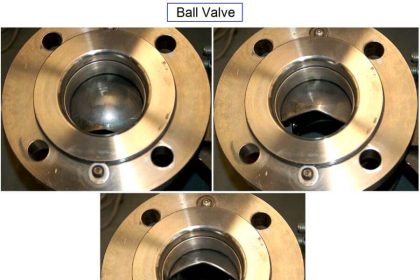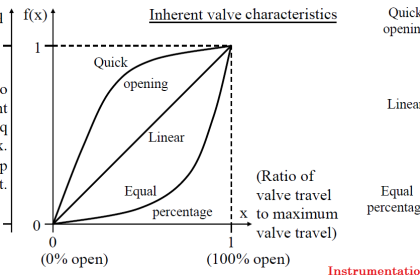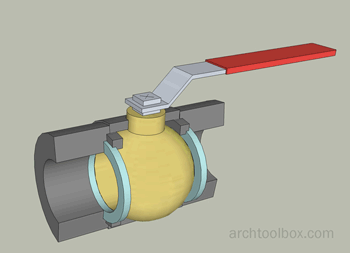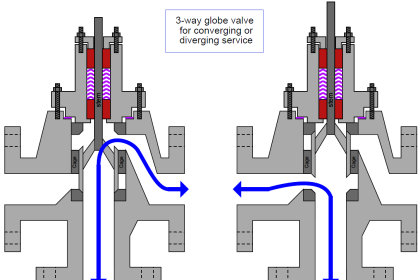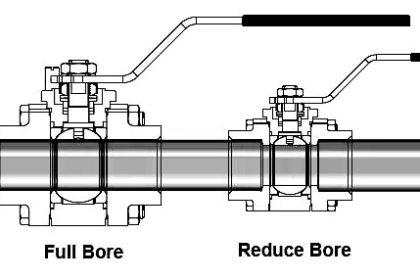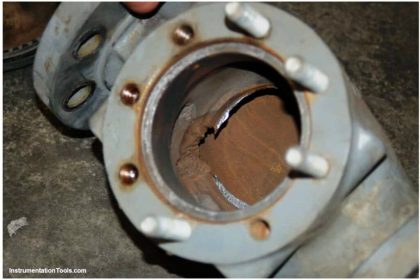Some globe valves use a pair of plugs (on the same stem) and a matching pair of seats to throttle fluid flow. These are called double-ported globe valves.
Double-ported Globe Valve
The purpose of a double-ported globe valve is to minimize the force applied to the stem by process fluid pressure across the plugs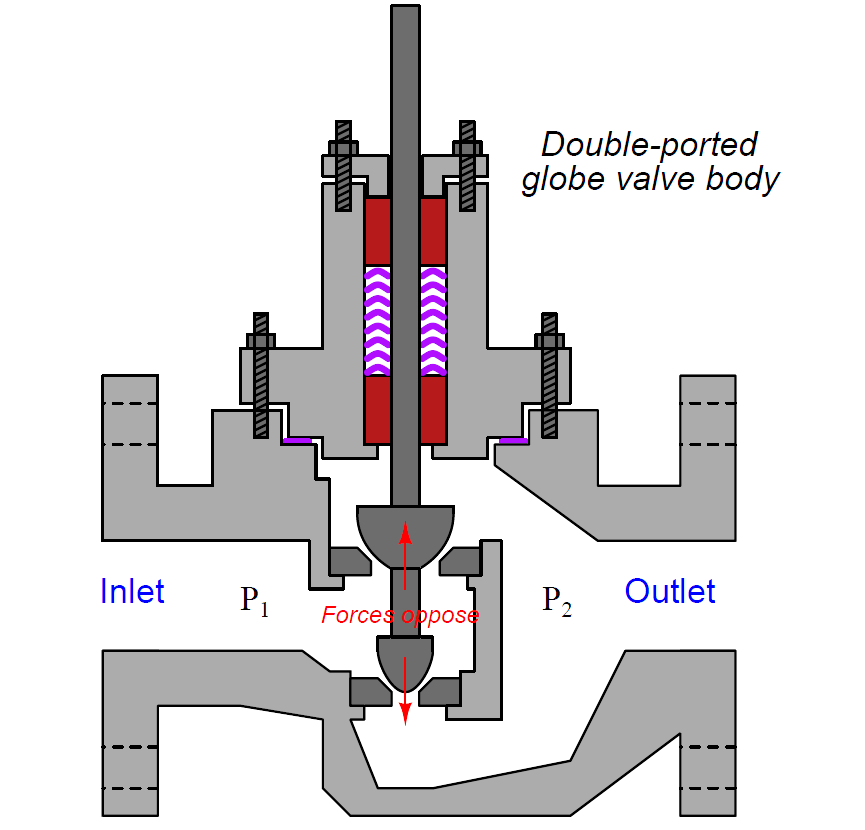
Differential pressure of the process fluid (P1 − P2) across a valve plug will generate a force parallel to the stem as described by the formula F = PA, with A being the plug’s effective area presented for the pressure to act upon.
In a single-ported globe valve, there will only be one force generated by the process pressure. In a double-ported globe valve, there will be two opposed force vectors, one generated at the upper plug and another generated at the lower plug.
If the plug areas are approximately equal, then the forces will likewise be approximately equal and therefore nearly cancel. This makes for a control valve that is easier to actuate (i.e. the stem position is less affected by pressure drop across the valve).
Also See : Globe Valve Animation
The following photograph shows a disassembled Fisher “A-body” double-ported globe valve, with the double plug plainly visible on the right:

This particular double-ported globe valve happens to be stem-guided, with bushings guiding the upper stem and also a lower stem (on the bottom side of the valve body).
Double-ported, port-guided control valves also exist, with two sets of port-guided plugs and seats throttling fluid flow. While double-ported globe valves certainly enjoy the advantage of easier actuation compared to their single-ported cousins, they also suffer from a distinct disadvantage: the near impossibility of tight shut-off.
With two plugs needing to come to simultaneous rest on two seats to achieve a fluid-tight seal, there is precious little room for error or dimensional instability.
Even if a double-ported valve is prepared in a shop for the best shut-off possible, it may not completely shut off when installed due to dimensional changes caused by process fluid heating or cooling the valve stem and body.
This is especially problematic when the stem is made of a different material than the body. Globe valve stems are commonly manufactured from stainless steel bar stock, while globe valve bodies are commonly made of cast steel.
Cold-formed stainless steel has a different coefficient of thermal expansion than hot-cast steel, which means the plugs will no longer simultaneously seat once the valve warms or cools much from the temperature it was at when it seated tightly.

